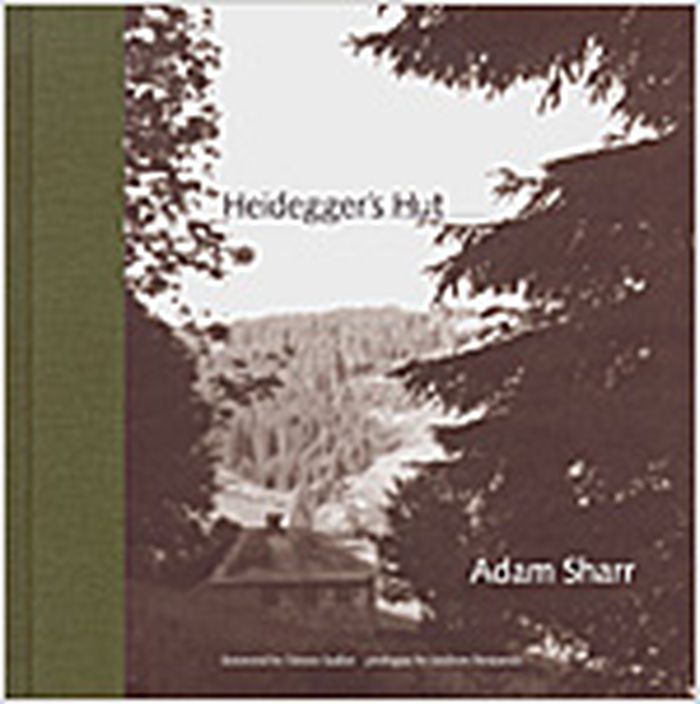$21.50
(disponible sur commande)
Résumé:
"Armed surfaces" presents DRD Lab's investigations into contemporary reality and a new typology for living. An analysis of transitional moments in daily life instigates a re-examination of Modern Functionalism as an ideology of standardisation and normalcy. The DRD Lab uses theory, spatial and cultural analysis, dynamic measurement, temporal positioning and their(...)
Dagmar Richter / DR_D : armed surfaces (serial books architecture & urbanism 5)
Actions:
Prix:
$21.50
(disponible sur commande)
Résumé:
"Armed surfaces" presents DRD Lab's investigations into contemporary reality and a new typology for living. An analysis of transitional moments in daily life instigates a re-examination of Modern Functionalism as an ideology of standardisation and normalcy. The DRD Lab uses theory, spatial and cultural analysis, dynamic measurement, temporal positioning and their collected data to develop a non-standard diagram which exposes the new role of architectural surfaces as 'performing surfaces'. This concept is explored through a series of research-oriented projects which include 'custom mass produced' contemporary housing, a performance induced landscape and an urban frontage. In the diverse projects which she undertakes, Richter seeks to radically reinvent urban design through a game of 'retracing' and 'restitution', founded in the notion that information is what qualifies space. The book explores new solutions to architecture and planning exposing an alternative view of architecture.
petits formats
Heidegger's hut
$32.95
(disponible sur commande)
Résumé:
"This is the most thorough architectural 'crit' of a hut ever set down, the justification for which is that the hut was the setting in which Martin Heidegger wrote phenomenological texts that became touchstones for late-twentieth-century architectural theory." --from the foreword by Simon Sadler Beginning in the summer of 1922, philosopher Martin Heidegger(...)
Théorie de l’architecture
octobre 2006, Cambridge / London
Heidegger's hut
Actions:
Prix:
$32.95
(disponible sur commande)
Résumé:
"This is the most thorough architectural 'crit' of a hut ever set down, the justification for which is that the hut was the setting in which Martin Heidegger wrote phenomenological texts that became touchstones for late-twentieth-century architectural theory." --from the foreword by Simon Sadler Beginning in the summer of 1922, philosopher Martin Heidegger (1889-1976) occupied a small, three-room cabin in the Black Forest Mountains of southern Germany. He called it "die Hütte" ("the hut"). Over the years, Heidegger worked on many of his most famous writings in this cabin, from his early lectures to his last enigmatic texts. He claimed an intellectual and emotional intimacy with the building and its surroundings, and even suggested that the landscape expressed itself through him, almost without agency. In Heidegger's Hut, Adam Sharr explores this intense relationship of thought, place, and person. Heidegger's mountain hut has been an object of fascination for many, including architects interested in his writings about "dwelling" and "place." Sharr's account--the first substantive investigation of the building and Heidegger's life there--reminds us that, in approaching Heidegger's writings, it is important to consider the circumstances in which the philosopher, as he himself said, felt "transported" into the work's "own rhythm." Indeed, Heidegger's apparent abdication of agency and tendency toward romanticism seem especially significant in light of his troubling involvement with the Nazi regime in the early 1930s. Sharr draws on original research, including interviews with Heidegger's relatives, as well as on written accounts of the hut by Heidegger and his visitors. The book's evocative photographs include scenic and architectural views taken by the author and many remarkable images of a septuagenarian Heidegger in the hut taken by the photojournalist Digne Meller-Markovicz. There are many ways to interpret Heidegger's hut--as the site of heroic confrontation between philosopher and existence; as the petit bourgeois escape of a misguided romantic; as a place overshadowed by fascism; or as an entirely unremarkable little building. Heidegger's Hut does not argue for any one reading, but guides readers toward their own possible interpretations of the importance of "die Hütte."
Théorie de l’architecture
$14.99
(disponible sur commande)
Résumé:
Throughout his architectural career, Peter Eisenman has been known primarily as a theorist and educator. Since the late 1980s, however, he has designed and built several major projects throughout the world. In this comprehensive monograph of the years 1988–1998, Eisenman the theoretician and Eisenman the practicing architect are presented in a series of projects and(...)
Blurred zones : investigations of the interstitial - Eisenman architects 1988-1998
Actions:
Prix:
$14.99
(disponible sur commande)
Résumé:
Throughout his architectural career, Peter Eisenman has been known primarily as a theorist and educator. Since the late 1980s, however, he has designed and built several major projects throughout the world. In this comprehensive monograph of the years 1988–1998, Eisenman the theoretician and Eisenman the practicing architect are presented in a series of projects and essays. Interspersed with the design projects are essays by Eisenman–on blurring, the interstitial, and undecidability–and by other writers and critics, including Frederic Jameson, John Rajchman, and K. Michael Hays.
livres soldés


